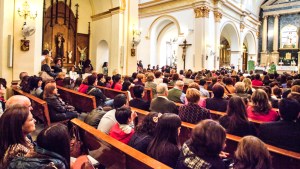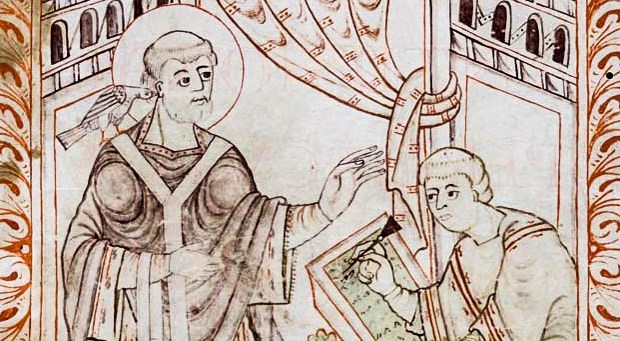In recent days calls have come from certain quarters for the relaxation of clerical celibacy in the Latin Catholic Church. Many point out that the practice of celibacy for the clergy is a discipline that could change, as opposed to a dogma that cannot. While this is true, one should have a firm understanding of the origins, purposes, and benefits of this venerable tradition, in order to understand why clerical celibacy has become a cornerstone of our Catholic life.
All Christian doctrine and practice flows from the life and teaching of Jesus Christ. We know that Christ was unmarried; consequently, he exercised a single-minded devotion to the mission that His Father had sent Him to accomplish. While many of the Apostles had wives, it was St. Paul who solidified the Christian appreciation for lifelong virginity and celibacy as a way of imitating Jesus. While Paul valued monogamous marriage highly, he also clearly expressed the preference that one might have for the celibate state. He wished all could remain unmarried as he was (1 Cor 7:7). Paul argued his case by developing the doctrine of the “undivided heart” (see verses 32-34). The unmarried person can focus on Christ exclusively, Paul explained, whereas the concerns of the married are multiplied and complex. In the New Testament, therefore, virginity and celibacy are presented as higher callings and gifts of God to be embraced by those who receive them.
As time went on the Church was forced to defend itself against Dualist heretics, who claimed the body was evil, and condemned marriage. Yet at the same time the Church promoted asceticism, fasting, abstinence, and sexual restraint among the faithful, not because the material world was corrupted but to set the pursuit of earthly goods in right order, directing it to the pursuit of eternal goods.
By the 300s, monasticism had become the preferred method of those who pursued Christian perfection. When Christians asked themselves, “How do I become perfect as Christ called us to be?” (Mt 5:48), they found in Him the exemplar of that perfection. Christ was totally obedient to the will of the Father, he was poor in worldly possessions, and he was unmarried. These three qualities together became known as the evangelical counsels of poverty, chastity, and obedience. They are not commandments, for marriage, material wealth, and free choice are themselves good things, and gifts of God. Rather the monk or nun chose to forego these goods in favor of a pursuit of holiness.
For 1,000 years the monks and nuns provided the reforming evangelical energy of the Church. It did not take long for Christians to view them as paragons of holiness and to pattern wider Christian practices after theirs. As early as the first decade of the 300s, bishops of the Western Latin Church began to codify the practice already well established in many areas and prescribed celibacy for their non-monastic priests. It must be emphasized that all vows in Christianity, whether those of marriage or the religious life, are voluntary. No one is to be forced into a vow, therefore every vow of celibacy is — of its very nature — free.
It took many centuries for the practice of clerical celibacy to prevail in some corners of the Western Church. In the 11th century, there was a serious crisis that mirrors our present one. Rampant corruption manifested itself in widespread clerical immorality and homosexual practices. Pope Gregory VII and his collaborators, coming from a monastic tradition, purified the Church thoroughly, stringently enforcing the apostolic practice of clerical celibacy and creating the morally purified Church of the high medieval period.
By the 16th century, immorality had crept back into the ranks of the clergy, as members of the hierarchy, including a few popes, engaged regularly in activities that contravened their vows. Luther and the reformers rightly took issue with this corruption, but made the mistake of refusing to recognize the noble calling of virginity and celibacy. They abolished such vows, closed monasteries, and essentially forced pastors to become married. But Luther had thrown the baby out with the bathwater. Celibacy was not the problem he confronted; human sin was. A lack of formation and supervision of the clergy was rectified by the reforming Council of Trent, which reinforced clerical celibacy, created seminaries, refined spiritual direction, and purified the hierarchy so thoroughly that there was not to be any need for further reform for nearly 400 years.
Now we are confronted with a new crisis of corruption. The Church must indeed find reformation and purification, not by discarding its venerable practices, but by returning to the imitation of Christ. Celibacy is a treasured inheritance of our Western Catholic Church. The celibate priest is the spiritual father of his community, unhindered in his preaching, governing, and sanctifying by familial considerations. He has no pressure to support a family, or to give excessive deference based on such connections. He is the very image of the chaste Christ in our parishes. His sacrifice of the earthly good of marriage is an enduring symbol of renunciation in our very midst, and beckons young men and women to a life of heroism. His celibacy points us to the life of the heavenly kingdom (Mt 22:30). Moreover, the priest’s sacrifice is not “unnatural,” for indeed the chastity that informs his celibacy is the call of every single person, whether married or unmarried. The priest’s burden is also shared with the confraternity of fellow priests, which ought to create a deep esprit-de-corps of solidarity and mutual support.

Read more:
Sex abuse scandal in the Church: How parishes are responding
We must be wary of discarding truth when confronted with hypocrisy. The fault of the current crisis lies with those who have failed to teach and reinforce Christian morality and sacrifice, and who have shamelessly and evilly covered up the abuses of others. The fault lies too with those who have turned from so grievously from the life of grace. The fault is not in the imitation of Christ; it is in those who have failed to imitate Him, and who will be judged accordingly, in this life and in the next.

